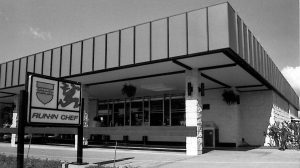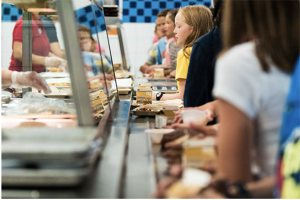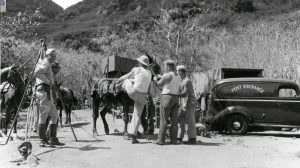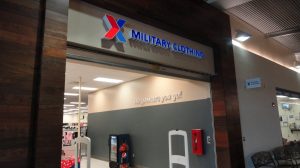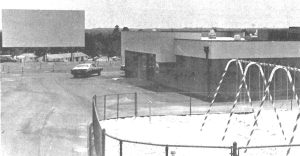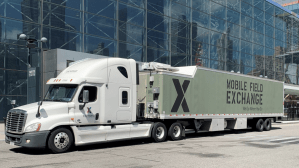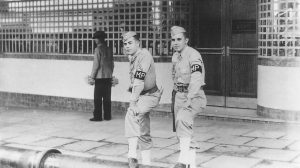History
The Exchange’s foray into name-brand restaurants came in 1977 when Baskin-Robbins opened its famous ice-cream shop at Edwards AFB, Calif. In 1984, Burger King became the first name-brand burger restaurant to join the AAFES family, opening 185 BKs throughout the world on Army and Air Force installations. The first one was at Ansbach, Germany. Other…
Read MoreThe Army & Air Force Exchange Service dished up its first school lunches back in 1955 when school cafeterias opened on military installations in the United Kingdom. In 1980, the Exchange was designated the sole school feeding authority for the Army and Air Force. In 2019, the Exchange served 2.6 million meals in 76 Department…
Read MoreIn 1965, the Army & Air Force Exchange Service took over a handful of PXs from the Navy in Vietnam the day after Christmas. At the height of the war in the late 1960s, the Exchange served American Warfighters with 50 major stores, 1,800 concessions and 180 food facilities, from cafeterias to snack wagons. On…
Read MoreIn its 125-year history, America’s Warfighters could always rely on the Exchange to be there for them, regardless of whether the “stores” were tents, pack mules, bamboo huts, mobile trucks, boats, choppers or spacious modern malls. In fact, the organization remains as relevant today as it was on the open frontier more than a century…
Read MoreThroughout most of the Exchange’s history, troops could buy military uniforms in the main stores, but the Army and the Air Force also carried them in their own outlets. To cut costs and combine operations, the military turned operations of its clothing stores over to the Exchange. During March through May 1976, the Exchange assumed…
Read MoreThroughout its 125 years, the Army & Air Force Exchange Service has offered just about any kind of service customers wanted. During the 1950s, Exchange concessionaires at Fort Hood and Fort Huachuca operated horseback riding schools. The Exchange even provided a merry-go-round for military children at Harmon AFB in Newfoundland, Canada. At Fort Dix in…
Read MoreThroughout the Exchange’s history, main stores—post exchanges, base exchanges, PXs, BXs, whatever the troops called them—have changed from rudimentary tents and not-so-well-lit rooms to the most modern shopping malls that rival those in the private sector. Here is a sampling of what today’s main stores looked like years ago. Find more in the “PXs of…
Read MoreNever before in modern history have Exchange associates faced anything as ominous as the COVID-19 virus, but they remained committed to the well-being of shoppers and themselves. Beginning in March, they began wearing required facemasks. Headquarters associates began working from home. Customer service and sales points were disinfected regularly, while clear shields were installed at…
Read MoreAnother week has come and gone, and it was another busy one in the Exchange Post as the 125th anniversary celebration continues for the Department of Defense’s largest retailer. This week, the Exchange Post spotlights history and associates who exemplify the core value of family serving family. It also was a big week for grand…
Read MoreOn April 5, 1942, the first PX in Australia opened in Brisbane as hundreds of American Soldiers arrived during World War II. Tensions between Australian and American Soldiers began simmering almost immediately because the Americans made more money and wore better uniforms. Tensions boiled over on Nov. 26-27 with the Battle of Brisbane. The face-off…
Read More
